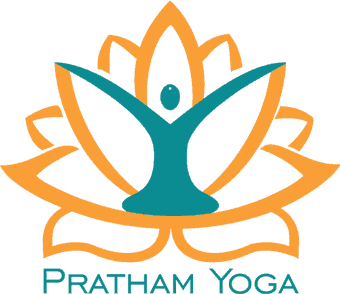Utkatasana: History, Practice, and Transformative Power
Yoga, with its diverse array of poses and practices, is a holistic approach to achieving physical, mental, and spiritual well-being. Among the multitude of poses that grace the yoga landscape, Utkatasana stands tall as a powerful posture, revered for its multifaceted benefits and symbolism in the practice. Let’s delve deeper into the intricacies of Utkatasana, exploring its history, significance, benefits, and considerations within the realm of yoga practice.
History of Utkatasana
Utkatasana, commonly known as the Chair Pose, finds its roots in ancient yogic texts. The Sanskrit term “Utkatasana” is derived from the combination of two words: “Utkata,” meaning powerful or fierce, and “asana,” denoting posture or pose. This asana has been documented in ancient yogic scriptures like the Hatha Yoga Pradipika and the Yoga Sutras of Patanjali.
Historically, Utkatasana was believed to evoke the image of sitting on an invisible chair, embodying strength and stability. It was practiced to enhance physical endurance and mental resilience.

What is Utkatasana?
Utkatasana is a foundational standing pose that engages multiple muscle groups while promoting alignment, balance, and focus. To perform this pose, one begins by standing tall with feet together or hip-width apart. With a deep inhale, the practitioner bends their knees, lowering their hips as if sitting back into an imaginary chair. The arms can be extended overhead or joined in prayer at the heart center, maintaining a straight spine and active engagement of core muscles.
This asana demands a harmonious blend of strength and flexibility, activating the quadriceps, glutes, and core while also stretching the chest and shoulders. It encourages mindful breathing, fostering a sense of grounding and centeredness.
The Benefits of Utkatasana
– Physical Strength
- Utkatasana strengthens the lower body, targeting muscles in the thighs, calves, and buttocks.
- Toning these muscle groups contributes to improved overall physical strength.
– Stability and Posture
- Regular practice of Utkatasana enhances stability.
- Improved posture is a key benefit, reducing tension in the back and shoulders.
– Digestive Health
- Utkatasana stimulates digestive organs, aiding in metabolism.
- Promotes better digestion, contributing to overall digestive health.
– Mental Focus and Endurance
- Cultivates mental focus through the concentration required in the pose.
- Enhances endurance, fostering determination and willpower in practitioners.
Utkatasana and Belly Fat Reduction
While Utkatasana engages various muscle groups and contributes to overall strength and toning, specifically targeting belly fat reduction solely through this pose may not be realistic. A holistic approach, combining various yoga postures, cardiovascular exercises, and a balanced diet, is essential for reducing belly fat effectively.
Who Should Avoid Utkatasana?
– Knee Injuries or Chronic Knee Pain
Concern: Utkatasana may exacerbate knee issues.
Caution Needed: Individuals with knee injuries or chronic knee pain should approach the pose cautiously.
Recommendation: Seek guidance from a qualified yoga instructor before attempting Utkatasana.
– Pregnant Women
Concern: Potential complications for pregnant women.
Caution Needed: Pregnant individuals should modify or avoid Utkatasana.
Reasoning: The pose may pose risks or discomfort during pregnancy.
– Low Blood Pressure
Concern: Possible adverse effects on blood pressure.
Caution Needed: Individuals with low blood pressure should exercise caution with Utkatasana.
Prevention of Complications: Modifying or avoiding the pose can help prevent potential complications related to blood pressure issues.
Pratham Yoga: A Haven for Yoga Teacher Training
At Pratham Yoga, nestled in the serene landscapes of Rishikesh, India, seekers of yoga wisdom embark on transformative journeys through meticulously crafted training programs. Within the selection of programs, one notable option is the revered 200 Hour Yoga TTC in Rishikesh. This course serves as a pivotal gateway for aspiring yoga teachers, offering a transformative journey to deepen their practice and understanding of this ancient art.
The 200 Hour Yoga Teacher Training in Rishikesh at Pratham Yoga is designed to provide a comprehensive foundation in yoga philosophy, anatomy, asana practice, teaching methodology, and more. Led by seasoned yoga instructors, the program offers an immersive experience, nurturing not only the technical aspects of yoga but also the spiritual and philosophical dimensions.
For those seeking advanced training, Pratham Yoga also presents the esteemed 300 Hour Ayurveda Yoga Teacher Training. This in-depth course delves into the synergy between yoga and Ayurveda, exploring the holistic healing aspects of both disciplines.
Embrace Utkatasana, Embrace Transformation
Utkatasana, the Chair Pose, epitomizes the strength and grace inherent in yoga practice. Its rich history, coupled with its array of benefits, signifies the depth and breadth of this ancient discipline. As practitioners delve into this empowering asana, they not only strengthen their bodies but also embark on a transformative journey, nurturing the union of mind, body, and spirit.
At Pratham Yoga, amidst the enchanting environs of Rishikesh, the essence of yoga unfolds, guiding individuals on profound paths of self-discovery and enlightenment. Through meticulous training programs, a blend of tradition and modernity converge, empowering individuals to become adept yoga teachers, and fostering the evolution of yoga across the globe.
In the pursuit of wellness, embracing Utkatasana becomes a metaphorical gesture—a reminder to approach life with strength, resilience, and unwavering determination, both on and off the mat.


